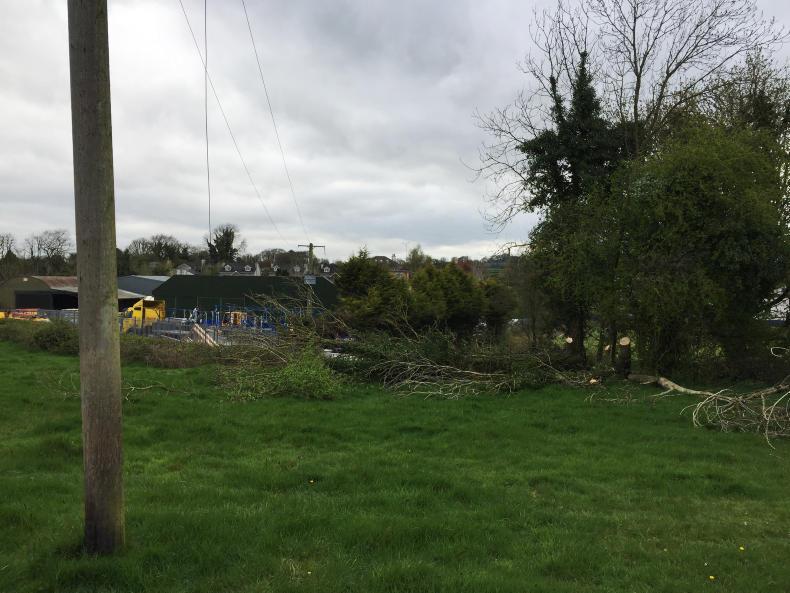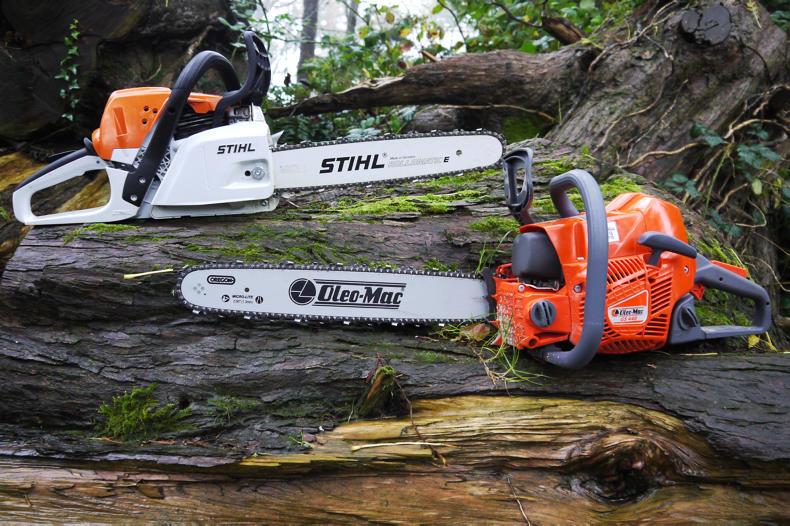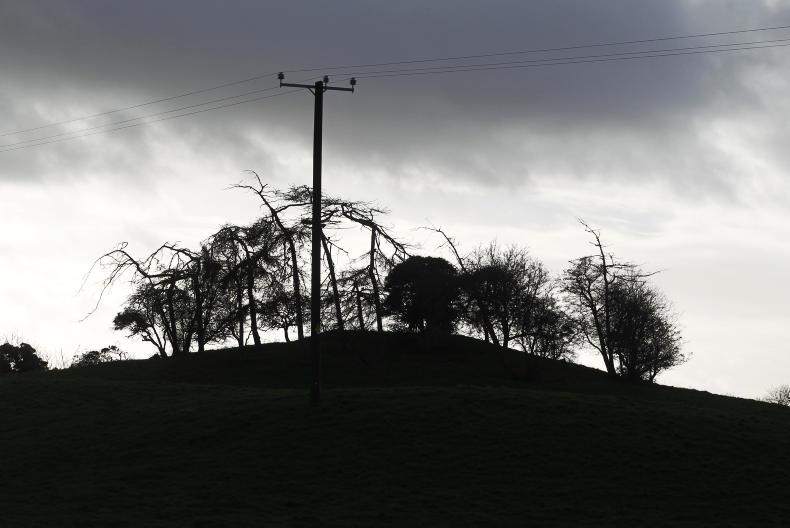1. Your environment
The temptation when we see a fallen tree or overhanging limb is to grab the saw and trim it back. Take a few minutes to assess the risks that you are exposing yourself and those around you to. Don’t get yourself into a situation that you can’t readily make your escape from.

If the tree falls the wrong way or the branch you are cutting falls back on top of you consider this before the first cut is made. If cutting a tree down, don’t underestimate the weight of the canopy above your head and the damage it could do to you, your property or people in the surrounding area should it fall the wrong way.
2. Your chainsaw
As already outlined all saws should be fully maintained and serviced by either trained service personnel where you purchased the chainsaw or someone who is an expert in this field.

A worn chain can be lethal if it breaks so if it’s worn-out it needs to be replaced. Not only will it be safer but will also cut better saving you a lot of effort, fuel and time. A worn chain will also wear out your saw prematurely.
3. Beginning work
After you have all your personal protective equipment fitted and are ready to begin work, make sure you have a firm grip on the saw in both hands.
Gloves will reduce vibration, protect your hands from injury and reduce fatigue when operating the saw over a long day.
They will also keep you warm if operating in cold weather.
Thumbs should be firmly wrapped around the handles to have maximum control. Use the saw with a broad stance for stability and avoid overreaching. The risk here is twofold as you have less control the further the chainsaw is from you and you are at risk of back injury.
Try to operate the chainsaw in as vertical a stance as possible and as close to your body as possible for maximum control.

Above all else avoid kick back.
This happens when the bar suddenly jumps upwards and towards your head.
Make sure the chainsaw has a fully functioning chain brake and use the underside of the bar as much as possible avoiding using the “nose” of the bar.
The firmer you grip the saw the better control you have over the saw should it kickback.
4. Cutting near overhead electricity wires
Ask yourself the question: do you know what can go wrong and are you sure it’s safe? Imagine cutting a tree and watching as it catches the electricity wires and brings them to the ground. There may be no fireworks, only a few sparks accompanied by a faint burning smell.
Look around and you may see someone lying quite still on the ground.
With electricity, it is too late when something happens, because the body is not able to deal with electricity, even very small amounts can result in electrocution.

Where tree-cutting accidents have happened, the mistake was in thinking that the tree was further away from the wires than was the actual case or that the tree ‘kicked’ and fell in a different direction than planned.
Hindsight showed that, sometimes, the wires needed to be disconnected, and in some cases dropped to the ground in order for the tree to be cut down, safely.
Because there is always the risk of the tree falling in the wrong direction, the advice is never cut trees that are closer than the height of the tree over ground plus one metre in every direction.
Every tree is different and your cutting position may change but never lose sight of those wires and what could possibly happen.
That might mean stopping work before cutting the next tree because it is more awkward that you thought.
Safety Advice from Arthur Byrne of ESB Networks:

Accidents can be prevented. Always plan the work and think about what could go wrong when there are electricity wires and poles nearby. If there is even the slightest risk, contact the ESB Networks Emergency No. 1850 372 999 for help.Always measure on the ground and ensure that you are well clear of overhead wires. Remember this includes any other tools, equipment, ropes, chains, etc. Electricity will flow from the wire down through these and pass through your body into the ground. For a flow of electricity to occur, it does not even require actual contact; coming close is often enough because electricity jumps across the air.Timber conducts electricity and there have been fatal accidents where the person cutting the tree was electrocuted because the timber he was cutting brushed off the wires and flowed through to the person.Electricity wires are always ‘live’ and extremely dangerous to touch. Never come too close to overhead wire. When an electricity wires come to the ground, the area for 5 metres around the wire will be ‘electrified’ and extremely dangerous. Read more
Oleo-Mac v Stihl: putting chainsaws to the test
In pictures: the shopping list you need to stay safe chainsawing
1. Your environment
The temptation when we see a fallen tree or overhanging limb is to grab the saw and trim it back. Take a few minutes to assess the risks that you are exposing yourself and those around you to. Don’t get yourself into a situation that you can’t readily make your escape from.

If the tree falls the wrong way or the branch you are cutting falls back on top of you consider this before the first cut is made. If cutting a tree down, don’t underestimate the weight of the canopy above your head and the damage it could do to you, your property or people in the surrounding area should it fall the wrong way.
2. Your chainsaw
As already outlined all saws should be fully maintained and serviced by either trained service personnel where you purchased the chainsaw or someone who is an expert in this field.

A worn chain can be lethal if it breaks so if it’s worn-out it needs to be replaced. Not only will it be safer but will also cut better saving you a lot of effort, fuel and time. A worn chain will also wear out your saw prematurely.
3. Beginning work
After you have all your personal protective equipment fitted and are ready to begin work, make sure you have a firm grip on the saw in both hands.
Gloves will reduce vibration, protect your hands from injury and reduce fatigue when operating the saw over a long day.
They will also keep you warm if operating in cold weather.
Thumbs should be firmly wrapped around the handles to have maximum control. Use the saw with a broad stance for stability and avoid overreaching. The risk here is twofold as you have less control the further the chainsaw is from you and you are at risk of back injury.
Try to operate the chainsaw in as vertical a stance as possible and as close to your body as possible for maximum control.

Above all else avoid kick back.
This happens when the bar suddenly jumps upwards and towards your head.
Make sure the chainsaw has a fully functioning chain brake and use the underside of the bar as much as possible avoiding using the “nose” of the bar.
The firmer you grip the saw the better control you have over the saw should it kickback.
4. Cutting near overhead electricity wires
Ask yourself the question: do you know what can go wrong and are you sure it’s safe? Imagine cutting a tree and watching as it catches the electricity wires and brings them to the ground. There may be no fireworks, only a few sparks accompanied by a faint burning smell.
Look around and you may see someone lying quite still on the ground.
With electricity, it is too late when something happens, because the body is not able to deal with electricity, even very small amounts can result in electrocution.

Where tree-cutting accidents have happened, the mistake was in thinking that the tree was further away from the wires than was the actual case or that the tree ‘kicked’ and fell in a different direction than planned.
Hindsight showed that, sometimes, the wires needed to be disconnected, and in some cases dropped to the ground in order for the tree to be cut down, safely.
Because there is always the risk of the tree falling in the wrong direction, the advice is never cut trees that are closer than the height of the tree over ground plus one metre in every direction.
Every tree is different and your cutting position may change but never lose sight of those wires and what could possibly happen.
That might mean stopping work before cutting the next tree because it is more awkward that you thought.
Safety Advice from Arthur Byrne of ESB Networks:

Accidents can be prevented. Always plan the work and think about what could go wrong when there are electricity wires and poles nearby. If there is even the slightest risk, contact the ESB Networks Emergency No. 1850 372 999 for help.Always measure on the ground and ensure that you are well clear of overhead wires. Remember this includes any other tools, equipment, ropes, chains, etc. Electricity will flow from the wire down through these and pass through your body into the ground. For a flow of electricity to occur, it does not even require actual contact; coming close is often enough because electricity jumps across the air.Timber conducts electricity and there have been fatal accidents where the person cutting the tree was electrocuted because the timber he was cutting brushed off the wires and flowed through to the person.Electricity wires are always ‘live’ and extremely dangerous to touch. Never come too close to overhead wire. When an electricity wires come to the ground, the area for 5 metres around the wire will be ‘electrified’ and extremely dangerous. Read more
Oleo-Mac v Stihl: putting chainsaws to the test
In pictures: the shopping list you need to stay safe chainsawing











 This is a subscriber-only article
This is a subscriber-only article












SHARING OPTIONS: